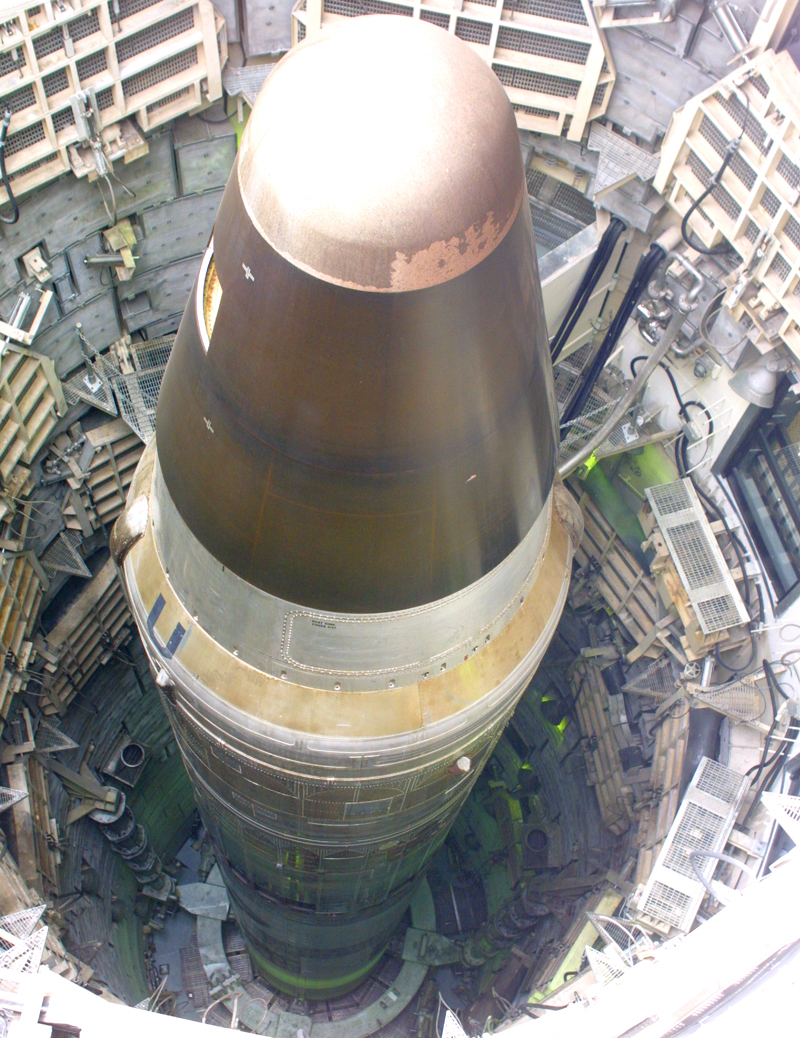
|
This is the reason for the existence of this
entire base. It is a Titan II missile, and the silo that it sits within.
This is a real missile, which has been deactivated. Back when the museum
was set up, this missile was laid outside for thirty days, so that it could
be observed, and it's deactivation verified by the Soviets. It is, according
to our guide, the twelfth Titan II produced. The MKVI re entry vehicle sits
on top, carrying a 9 MT W-53 warhead. Visible down the sides of the silo
are a number of retracted service ramps, used by maintenance personnel.
Also visible are numerous gray pads, looking a bit like mattresses
lining the silo walls. These are vibration dampers, and are in place to
keep the missile from shaking itself to bits during launch. In addition,
100,000 gallons of water are dumped into the bottom of the silo at the moment
of ignition, to prevent the exhaust jet from melting the lower portions of
the missile body. These missiles had a 9,000 mile range, and reached a height
of 100 miles, traveling into outer space. The ring, visible at the bottom,
is the shock mounted base for the missile. These sites were hardened, and
shock mounted, to be able to remain functional, even after nuclear attack.
|
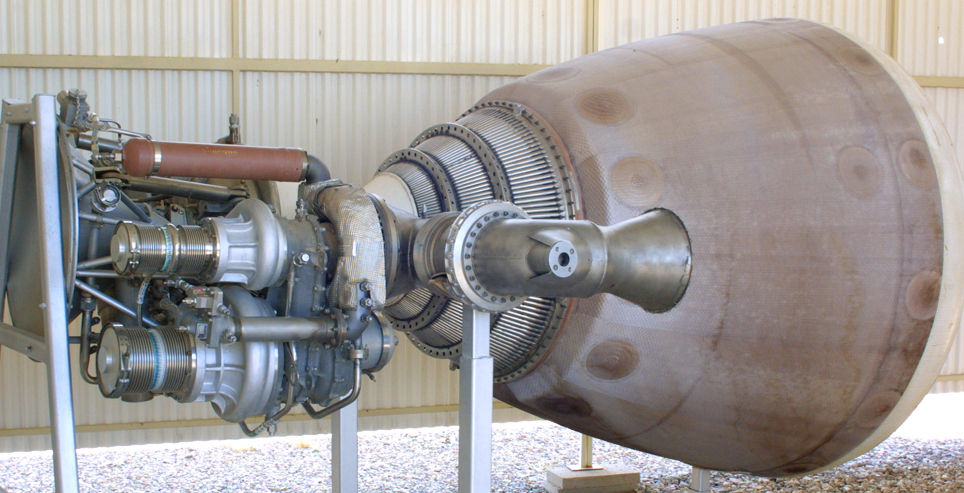
|
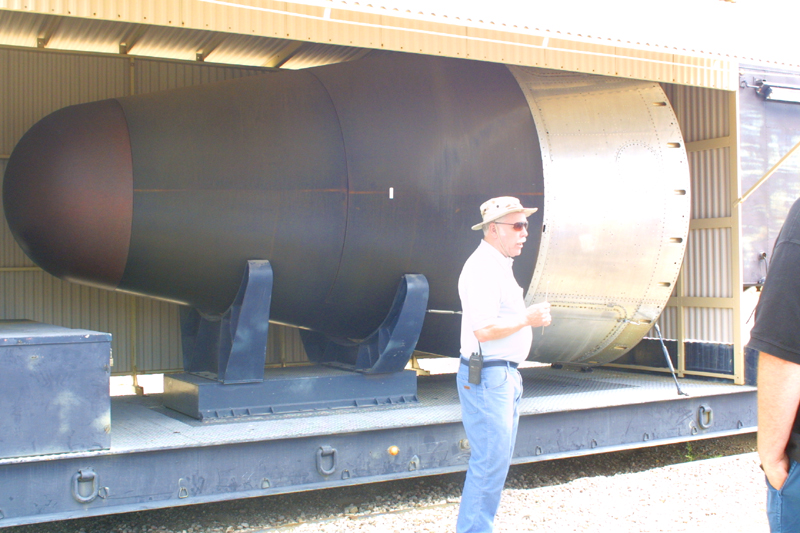
|
ABOVE:
The first stage motor of the TItan II. Two of these nozzles are visible
sticking out of the bottom of the missile. These motors generate 430,000 pounds
of thrust each.
LEFT:
The second stage motor of the Titan II. These motors are capable of producing
100,000 pounds of thrust each.
|
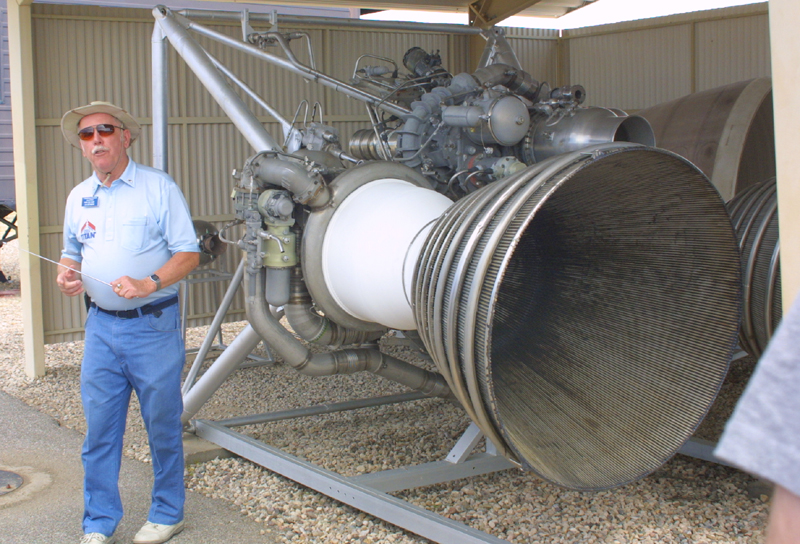
|
One of our guides acts as a scale to indicate
the size of the second stage motors. A portion of the first stage nozzle
is visible towards the upper right hand side of the photo, behind the second
stage motors
|
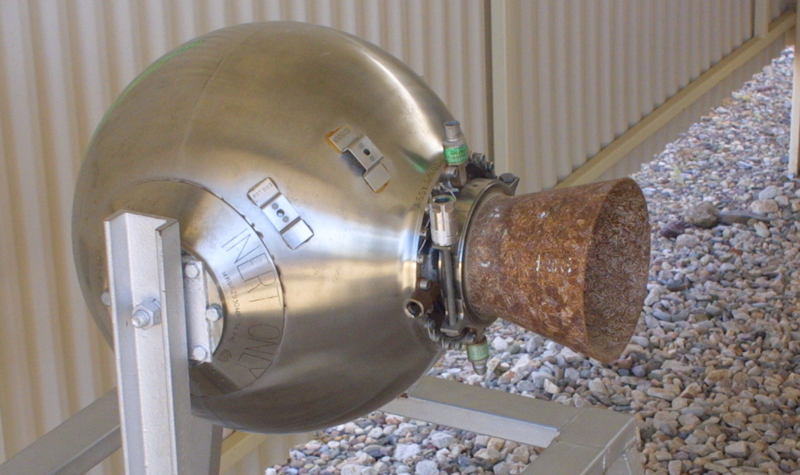
|
There is no third stage to the Titan II;
but there are some small motors used to help steer and correct the missile,
once the first two stages have burned out.
|

|
The butterfly valve lock is one of several
safety features built into the design of the rocket.
|
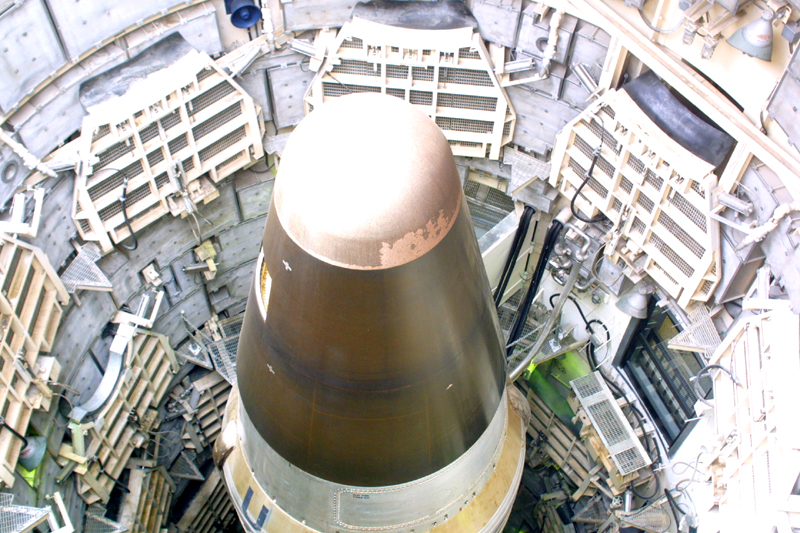
|
A view down at the missile, centered on the
MKVI re entry vehicle.
|
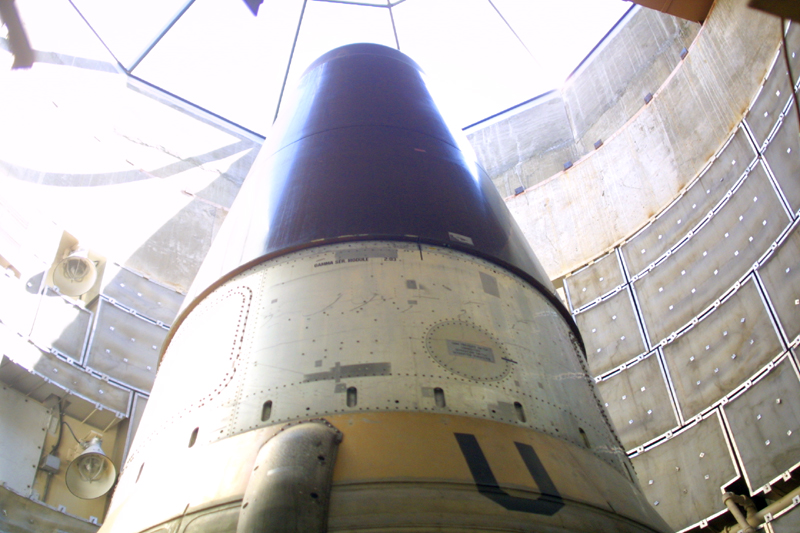
|
A look up at the MKVI re entry vehicle. This
contains the W-53 warhead, as well as shock absorbing, and triggering materials.
|

|
This is the ready room, for servicing the
missile. The protective suits, looking a bit like space suits, are required
for two reasons. The first is that the oxidizer, nitrogen tetroxide, is very
corrosive, and poisonous. The second is that it was imperative that
a constant temperature of 61 degrees be maintained within the silo.
|
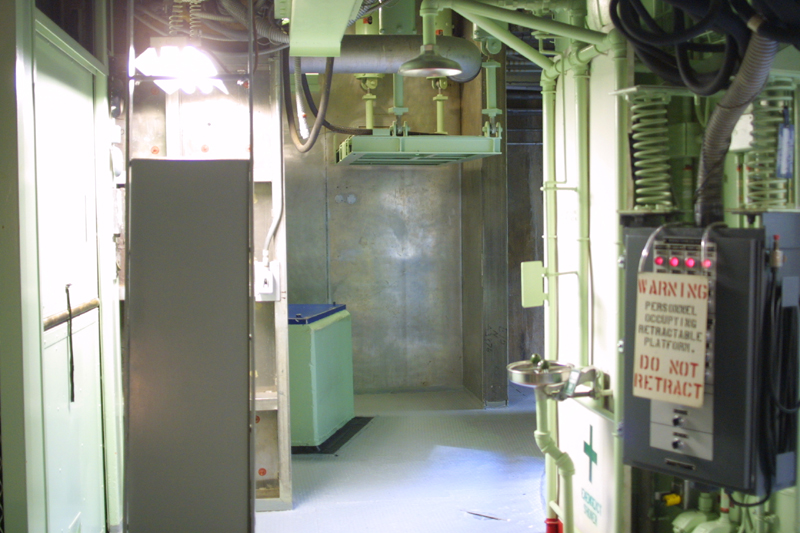
|
A view of the are around the silo. To the
left is a freight elevator, and to the right is an emergency eyewash. There
are a number of openings, and view ports around the missile.
|
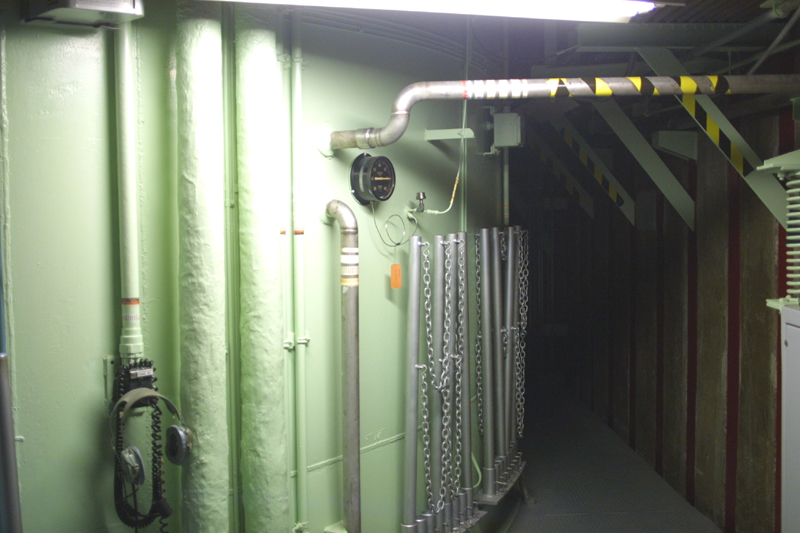
|
Some safety rails, stored away in one of the
areas surrounding the missile. The missile is ringed by a series of extensible
platforms, on several levels.
|

|
A pair of mannequins dressed up in missile
servicers protective suits. The panel to the left warns that there are "personnel"
occupying the platform, and that it should not be retracted.
|
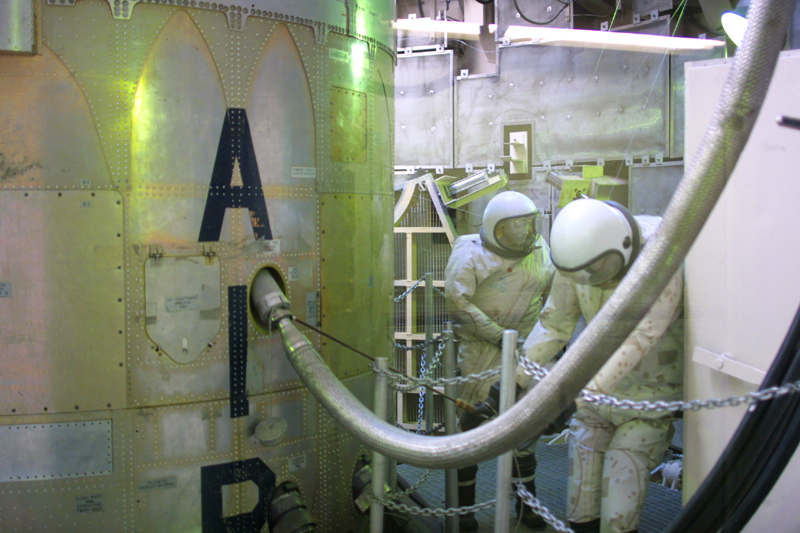
|
A better look a the two "servicers" around
the missile.
|
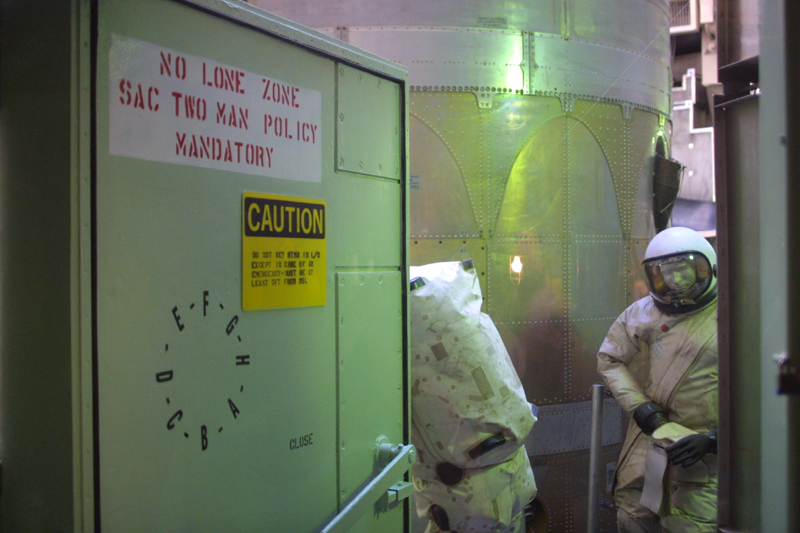
|
Ordinarily, even with men out servicing the
missile, this door would always be kept closed, for safety reasons, and to
help maintain a steady temperature.
|

|
A view of the MKVI re entry vehicle, with
the guide used to show the scale. Note the close similarity in size, and
shape to the Gemini space capsule.
|

|
This is what is called the physics package,
of the W-53 warhead, carried by the Titan II. This is a 9 MT hydrogen
bomb. The bomb is unusual in that the fission trigger uses highly enriched
uranium, rather than plutonium, as the fissile material. Most bomb designs
use plutonium.
The secondary stage, which is the fusion stage, used Lithium-6 (95%
enrichment) deuteride fusion fuel. Cyclotol or Composition B high explosive
(castable RDX/TNT mixtures), was molded into the lenses used to set off
the primary.
|

|
Assuming a detonation at optimum height,
a 9 megaton blast would result in a fireball roughly 1 mile in diameter,
lasting 12 seconds. The radiated heat would be sufficient to cause lethal
burns to any unprotected person within 17.8 miles. Blast effects would
be sufficient to collapse most residential and industrial structures within
a 9.2 mile radius. Within 3.5 miles, virtually all above-ground structures
would be destroyed and blast effects would inflict near 100% fatalities.
Within 2.9 miles, a 500 rem dose of ionizing radiation would be received
by the average person, sufficient to cause a 50% to 90% casualty rate independent
of thermal or blast effects at this distance.
|
|